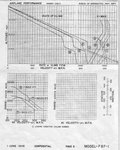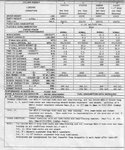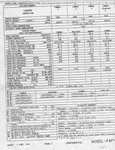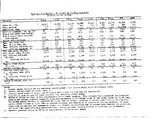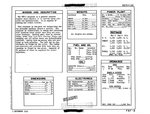FLYBOYJ
"THE GREAT GAZOO"
This is totally unbelievable.
Take-off speed is, say 100 mph. 115 feet is 38 yards. That is a plausible acceleration ( average about 3g) for a Top Fuel dragster, but not for a WW2 wintage stock propeller airplane.
Or then there must have been a storm like headwind.
Renee Francillon notes in his book "Grumman Aircraft Since 1929" (page 251): "The Bearcat's exceptional climb performance had been demonstrated on 20 November 1946, during the National Air Races in Cleveland, Ohio, when an F8F- flown by Lt. Cdr. M. W. Davenport set an unofficial time-to-height record by reaching 10,000 feet (3,048 m) in 1 minute 34 seconds."
This is from another forum written by our own R Leonard;
This was "Operation Pogo Stick" conducted as a demonstration at the Cleveland Air Race, November 22, 1946. An F8F-1 piloted by Comdr. Bill Leonard set a new time to climb record, from a dead stop to 10K feet in 97.8 seconds, including a 150 foot take off run. Unfortunately, he didn't get to keep the record very long. Lieut. Comdr. Butch Davenport came along about 15 minutes later and set the next new record of 94 seconds, also in an F8F-1 in a 115 foot take off run. Leonard's take off was into an estimated 30 kt head wind, by the time Davenport took off the head wind was over 40 kts. These wind speeds helped to reduce the time on the ground. Both were assigned to TACTEST at the time; Cdr Leonard was TACTEST projects officer. Lt Cdr Davenport was the F8F project officer. The F8F's used were the standard Navy aircraft, armed, with ammunition. The planes were modified, however, to allow full emergency military power with the landing gear down, something you couldn't do in a stock airplane due to safety locks.
The rapid climb to altitude was the F8F's bread and butter. The plane was to have been the solution to the kamikaze problem ... rapid climb capability, firepower, speed, and more (better) maneuverability than the F6F or F4U.
I've heard folks say that that Leonard and Davenport pretty well trashed the engines on their planes, but that is not so. This was not a spur of the moment stunt ". . . Hey, let's go up to Cleveland . . . I hear they're having an Air Race today . . . Maybe we can set a record of some kind". Actually they'd been practicing back at Patuxent with the same planes used in Cleveland, doing (without checking logs) three or four practice runs each. After the demonstration they flew those same planes back to TACTEST.
Somewhere around here I've got some pictures of Leonard and his plane maybe some of Davenport, too.
Regards,
Rich Leonard
(not a coincidence)

